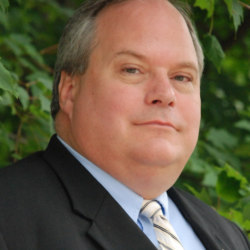The Coming Recession and its Root Causes
Milton Friedman determined the root cause of inflation to be government monetary policy and famously opined, “inflation is always and everywhere a monetary phenomenon that is produced only by a more rapid increase in the quantity of money than output (goods, services, and/or assets).”
A 1976 Nobel Prize winner in Economics for his pioneering work on monetary policy, inflation, and the business cycle, Dr. Friedman established a strong correlation between excessive government spending and monetary policy, its over-stimulation of the U.S. economy and the recessions or depressions that followed.
Current U.S. monetary policy has taken consumer price inflation from 1.4% on an annualized basis in January 2021 when President Biden was elected to 8.5% on an annualized basis at the end of March 2022. In fact, if you extrapolate the March monthly consumer inflation rate of 1.2% over 12 months, the yearly inflation rate would be 14.4%. Historically, inflation rates at this level have only been brought under control by economic recession or depression.
It is excessive inflation plus the following three indicators that lead us to believe a recession is on the horizon for the U.S. economy over the next 12 to 18 months.
1. Inverted Yield Curve
Since 1955, an inverted yield curve preceded every recession, except one. Within the last month, the two-year treasury rate inverted to the ten-year treasury rate, while the five-year treasury rate inverted to the 30-year treasury rate. The FED is raising short-term interest rates to curb inflation – a move that could push the country toward recession.
2. The “Rule of 4%”
Former U.S. Treasury Secretary Larry Summers has argued for more than a year that inflation is non-transitory and is caused largely by excessive government spending and expansionary monetary policy. Summers also proved that since 1945 when the U.S. Consumer Inflation Rate rises above 4% and the U.S. Unemployment Rate falls below 4%, the over-stimulation of the U.S. economy results and leads to a recession within two years. The “Rule of 4%” recently took place when the U.S. Unemployment Rate dipped below 4% in December 2021 with inflation above 4% simultaneously.
3. Used Car Prices as a leading indicator of recession
Former U.S. Federal Reserve chairman Alan Greenspan used to argue falling U.S. used car prices would directly or shortly thereafter be accompanied by reduced sales of used cars. He noted this correlation would take place when inflation increased at a faster pace than wages resulting in a decline in real incomes leaving consumers with reduced purchasing power. A slowing economy follows that eventually will lead to a recession or depression. Prior to March, U.S. used car prices were up roughly 40% on an annualized basis. However, in March 2022, used car prices were down 3.8% according to the U.S. Bureau of Labor Statistics, while sales of used cars less than 10 years old were down 27% when compared to March 2021. Buyers of used cars are now taking 171 days to shop compared with 89 days in March 2021.
The recent FED policy change to raising interest rates will have multiple impacts on the economy. Higher interest rates should slow down the economy as the cost of financing homes and automobiles and other large ticket items will be more costly. This is evident as noted in the slowing of used car sales and the sharp increase in mortgage rates from below 3% for 30-year mortgages in late 2021 to touching 5.11% on April 21st.
Conclusion
In addition to the above-noted data, the U.S. Producer Price Index (PPI) for March registered its highest level in its 12-year history at 11.2% (trailing 12-month growth), with a forward-looking annualized rate of 16.8%. The previous data is exacerbated by the fact that the Federal Reserve GDP Now estimator produced by the Atlanta Federal Reserve Bank is calling for a GDP growth rate of only 1.3% for the U.S. economy in the first quarter of 2022, which is much more optimistic than Goldman Sachs prediction of only 0.5% growth in Q1 2022. Former Trump Administration chairman of the President’s council of economic advisors, Dr. Kevin Hassett, using similar analysis to Alan Greenspan’s on declining new and used car sales in March, believes the U.S. economy may already be in recession or certainly heading in that direction. Finally, we are holding to our earlier prediction that there is a 60% chance the U.S. economy will be in recession by the end of the summer of 2023, if not sooner.
Editor’s note: This piece was authored by the McNair Center for the Advancement of Free Enterprise and Entrepreneurship at Northwood University, and appeared in the Detroit News April 23, 2022.

